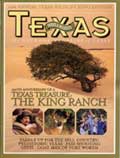
Content Analysis
By Jennifer Nalewicki
Are alligators causing the decline of mottled ducks? There's only one way to find out.
When it comes to eating, alligators aren’t too picky — at least that is what Texas Parks and Wildlife biologists are finding as they sample the stomach contents of American alligators along the upper and central coast of Texas.
By pumping the alligators’ stomachs, biologists and technicians on coastal wildlife management areas hope to determine the reptiles’ prey base, as well as any impact on pig frogs and mottled ducks. Populations of both have been dwindling for years.
Mottled ducks are most vulnerable to becoming an alligator’s prey during the summer, when they are flightless due to molting. While other ducks migrate north to nest, mottled ducks remain in Texas coastal prairies and marshes, often sharing the same habitat as alligators.
Since the study began in May, biologists and technicians have pumped the stomachs of dozens of alligators, finding everything from blue crabs, muskrats, birds, crawfish and frogs to shotshell wads, rocks and broken bottles. They have even found a brass faucet fixture for a garden hose.
“You never quite know what you are going to find,” says biologist Matt Nelson.
Waiting until dark, preferably before dawn during the dark phases of the moon, the biologists use airboats and spotlights to navigate the coastal marshes.
After catching an alligator either by hand or snare, biologists place it inside a duffle bag and bring it to shore, where they strap it onto a restraining board. They then insert a 3- to 4-inch-diameter PVC pipe about 8 inches long into the alligator’s open mouth, which they secure with duct tape. By counting forward four scale’s-widths from the alligator’s hind leg, the biologists determine the location of the stomach.
A clear plastic tube attached to a water hose is pushed through the pipe into the esophagus and into the stomach. Light water pressure serves as a lubricant. Once the hose enters the stomach, the water pressure is increased, gradually expanding the stomach until it reaches full capacity. The Heimlich maneuver is performed on the alligator, causing it to regurgitate into a washtub. After straining the stomach contents through a sieve, biologists place the sample in a bag and freeze it for future analysis.
It takes anywhere from four to five hours to capture and pump the stomachs of eight alligators a night. “It’s hard work,” says biologist Kevin Kriegel. “We get dirty out there catching them and it can get a little aerodynamic at times when the contents come up, but it's good research.“
Kriegal says that the process doesn't harm the alligators. "Sometimes the alligators will hiss at us a little bit," Kriegel says, "but they usually remain pretty docile. They haven't given us any problems yet, knock on wood."
Before returning the alligator to the site of its capture, biologists measure it, determine its gender and body condition and tag it with an electronic chip. The tagging assures that no alligator's stomach is pumped more than once a month, thus reducing stress on the alligators as well as preventing data from being skewed.
As for finding mottled duck remains, during the first round of testing in May and June the biologists came up empty-handed even though mottled duck broods are flightless at that time. As this article went into production, another round of tests was scheduled for July, during the peak of the mottled ducks' molting season. By the end of the first summer, TPWD biologists plan to have pumped the stomachs of 200 alligators, giving them a much better understanding of what role alligators might play in the mottled duck and pig frog decline.

